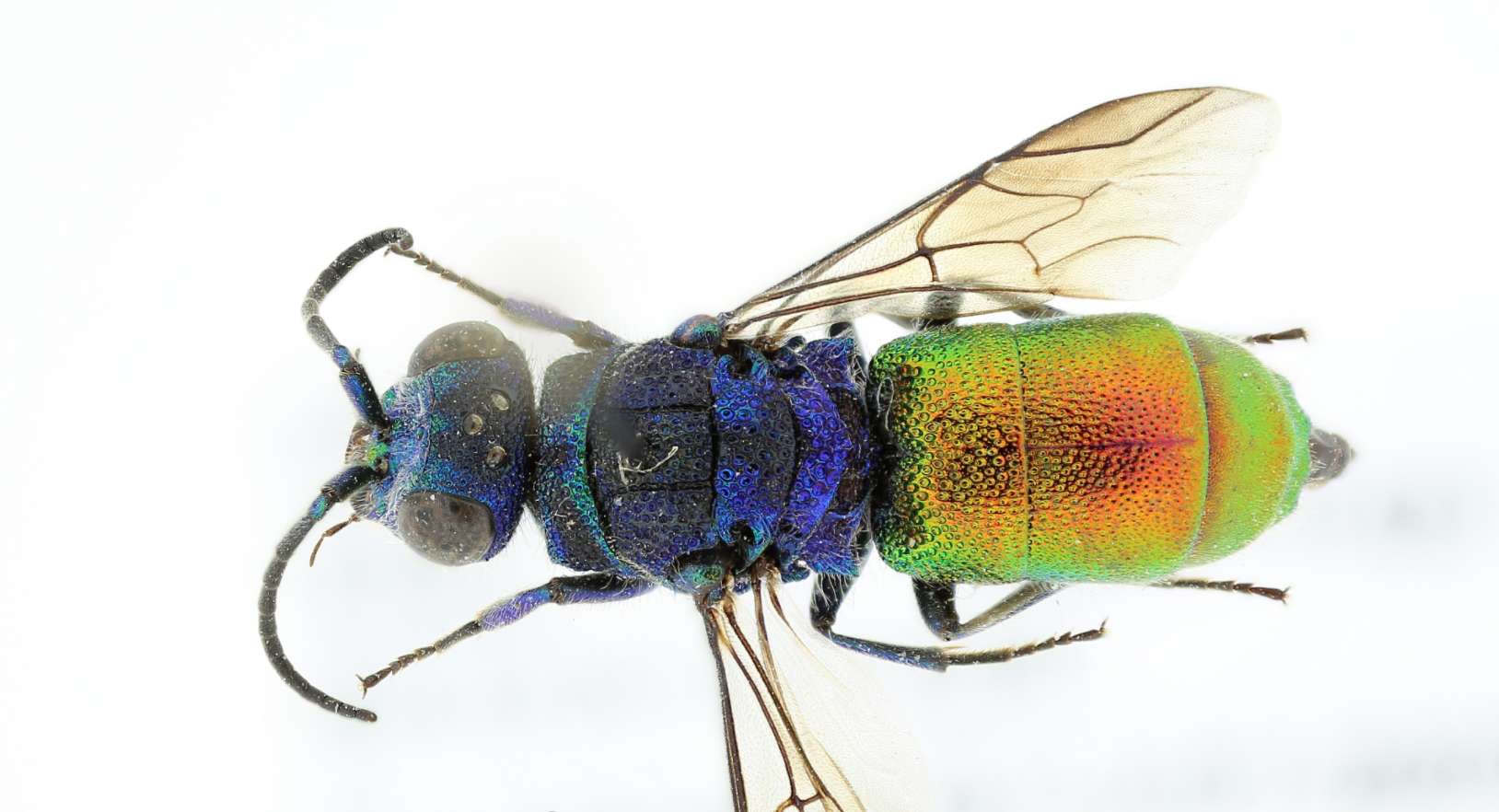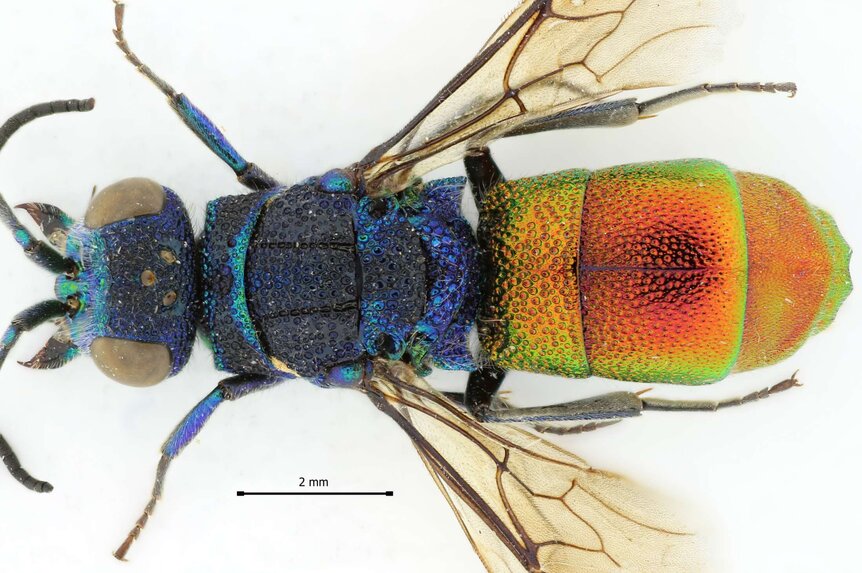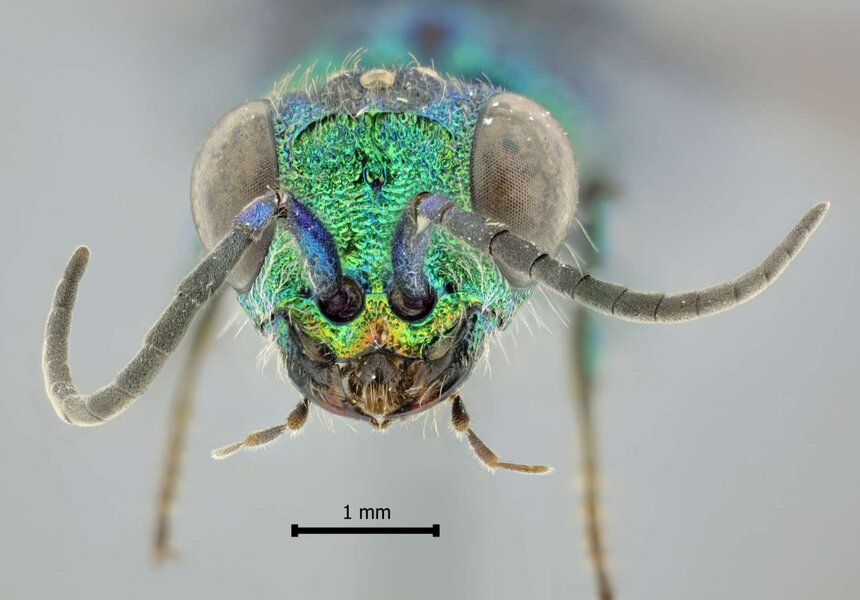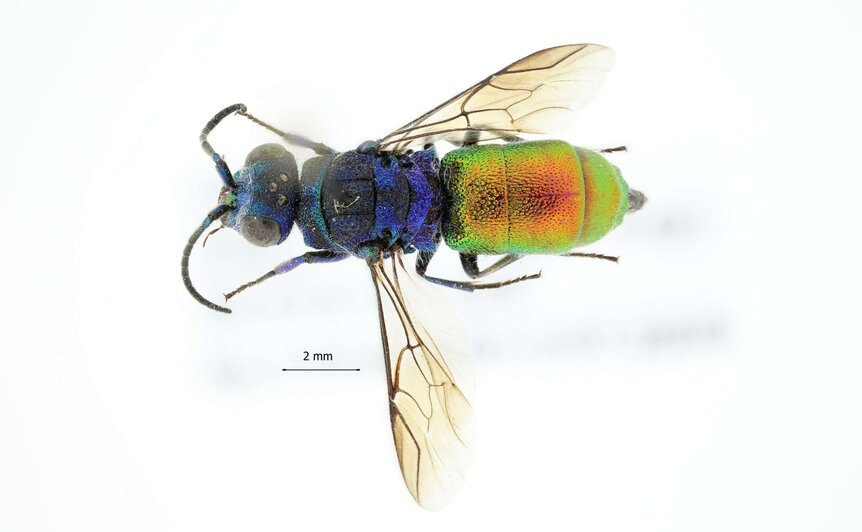Create a free profile to get unlimited access to exclusive videos, sweepstakes, and more!
Murder hornets are so 2020! Behold this vivid new species of Norwegian cuckoo wasp

It's hard to forget the alarming headlines announcing the imminent arrival of deadly murder hornets last year, and we're certainly glad the invasion was not nearly as severe as originally predicted.
In another interesting etymological discovery far less likely to cause panic, an international crew of biologists has identified a colorful new species of cuckoo wasp living in Norway, and it's an impressive, eye-catching insect sporting flashy iridescent carapaces that would make any self-respecting hornet blush.
Modern DNA coding techniques have allowed scientists to finally tell these rainbow insects apart for the first time, a process that led to the identification of this species. Their findings were recently published in the online journal, Insect Systematics and Diversity.
Often called emerald wasps, all cuckoo wasps belong to the tribe Chrysidini in the family Chrysididae, a hymenopteran collection of more than 3,000 recognized species with over 1,000 of them belonging to the genus Chrysis.
Officially catalogued as Chrysis parabrevitarsis, this vibrant new species resides in the arid dunes of the Lista peninsula near the municipality of Farsund in Norway.
Measuring roughly 0.5 inches in length, their coloring tends to fall within a range of metallic green to metallic blue. Their demented nickname refers to the unorthodox method by which these flying insects lay eggs in the nests of unrelated host species, similar to the rude behavior of the cuckoo bird.
These sneaky parasitic wasps have a wild method of baby-rearing, as they lay eggs in adult bee and wasp nests where their intrusive larvae hatch and then eat their hosts’ developing offspring. This home invasion is accomplished after bypassing the hive via the release of specific pheromones.
“Normally we distinguish insects from each other by their appearance, but cuckoo wasps are so similar to each other that it makes it difficult,” noted co-author Dr. Frode Ødegaard, a researcher in the Department of Natural History at the Norwegian University of Science and Technology.
Dr. Ødegaard and his researchers were able to discern that two nearly-identical Norwegian cuckoo wasps belong to different species on the basis of their utilization of varied hosts and speaking totally different insect ‘languages,’ which are determined by their particular cuticular hydrocarbons.
“We had two cuckoo wasps with microscopic differences in appearance and very small differences in DNA,” Dr. Ødegaard explained.
“Even with today’s advanced methods, using live animals for studies like this isn’t possible, but collecting individual specimens fortunately has no impact on the population,” Dr. Ødegaard added. “The insects have enormous reproductive potential, and the size and quality of the habitats are what determine the viability of the population, not whether any specimens are eaten by birds or collected by an insect researcher. The collected insects are absolutely crucial for researchers to be able to map and describe their diversity and thus take care of viable populations for posterity.”





























